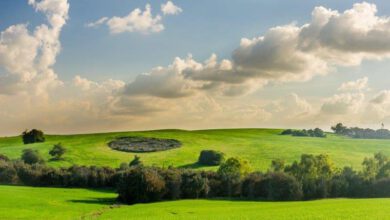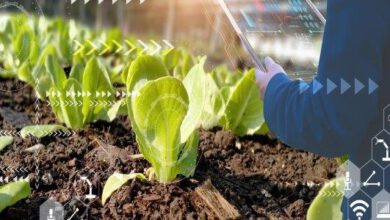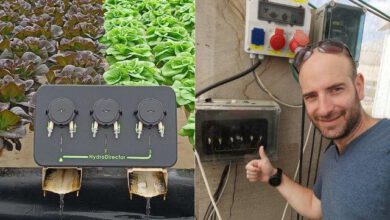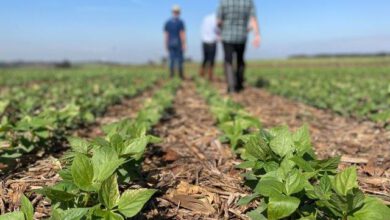Remote Sensing of Stomatal Conductance
Remote sensing is a sub-field within agriculture engineering which combines reflectance spectroscopy and plant biology
Dr. Oded Liran, odedl@migal.org.il Research group leader – Principal investigator - Department of plant sciences - MIGAL – Galilee Research Institute


There are 150 different definitions for water deficit, which are roughly divided into four main categories:
a. Drought due to weather conditions – where a region suffers from continuous elevated temperatures, high evaporation of water from the ground, and rainfall. These combined conditions result in water resources cannot be replenished fast enough;
b. Hydrological drought – where, because of weather, there is continuous usage of water by consumers –private, industrial and agricultural, and the water resources deplete;
c. Agricultural drought – a condition when a crop experiences a brief drought because of any number of reasons – be it technical (problem in transport systems) or other reasons. However, this condition does not require that an actual drought condition exists;
d. Socio-economical drought – where crops are not getting water at all due to scarce water reservoirs, and only rich societies with means to purchase water can practice agriculture, while the other poorer groups in society will compete over the existing resources.
Sometimes, a drought is required in some species of crops in order to achieve a specific effect related to what the species produces. For example, grapes for wine are put under stress in order to concentrate sugars into the grape. This increases the quality of the wine and contributes to its complex taste. Another example is the cotton plant, will move from the vegetation stage to reproductive stage with a decrease in irrigation. Such specific requirements of commercially-important crops has raised the question: does the crop receive the optimal fertigation in every geographical point?
This and other applicative research questions are the center of research for Dr. Oded Liran and his group of agro-physics studies at MIGAL – Galilee Research Institute. Dr. Liran, together with experts from various scientific fields collaborate to develop remote sensing indices and models using data science methodologies, together with chemometrics and classic plant physiological questions. Remote sensing is a sub-field within agriculture engineering which combines reflectance spectroscopy and plant biology. Reflectance spectroscopy is a scientific field which studies the interaction of light energy with matter, specifically sunlight with crops. Therefore, remote sensing asks whether it is possible to extract important information regarding the crop from the sunlight which deflects from it to a sensor. In this way, it is possible to bypass the need to destroy samples in the laboratory, which is both time consuming and expensive. Moreover, reflectance spectroscopy is not a new scientific field. In the past 50 years, engineers and scientists invented more than 600 different indices which account for various vegetation traits such as sugar and lignin content, pigment content, macro and micro nutrient content, water content, etc. 
When the first sensitive spectroradiometer reached the laboratory, the group was able to ask a very simple question. Are the current vegetation indices detecting the crop’s water stress? To answer this question, the group designed a field experiment which included cotton as the model crop, and they fed the crop varying water doses. The group tracked the crop’s performance from sowing to the end of the plant’s vegetative growth stage. They recorded the reflectance spectra of each of the water doses, and tracked the biological and technical repeats. The experiment included (once a week) a 24-hour dry period, where the irrigation was stopped, and tracking the reaction of each of the irrigation groups to that water stress. Prior to the stress inflicted, there was no difference between the irrigated plants’ spectra among different water doses. During the stress periods, the spectra were naturally organized in a gradient of reflected light, implying that the dose had some effect on the visual properties of the crop, as would be expected.
Upon return of the irrigation, there was again no difference between the spectra. The group verified with a Scholander bomb (pressure chamber) that, indeed, the various irrigation treatments experienced the stress. As a control mean the group performed an additional experiment, where the irrigation gradient was administered without a stop in the irrigation. In this case, there were no differences between the treatments, implying that the crops adapted over time to the water level given to them. The main conclusion from these two experiments were that as long as the cotton is irrigated properly, we will not be able to detect stress from water doses even if the irrigation dose is low. The detection is only apparent when there is a dire need for water, such as happens when irrigation stops abruptly, due to technical malfunctions.
This means that the current remote sensing technology is not sensitive enough to detect heterogeneous water demand in the field when – allegedly – everything is ok.
Therefore, the group asked whether a new level of information can be obtained from the same reflectance spectra gathered in the field. The group specifically asked: if chemometrics research the manifestation of chemical content within the plant in its reflectance spectra, will there be a detected trace in the same spectra of a decline in a physiological activity? The difference between physiology and chemistry is the various mechanisms which play out. Synthesizing a component within the cell, or using chemical molecules as nutrients involves an enzyme, precursor, and the product. Physiological activity, on the other hand, involves thousands of different chemical pathways, differences in cells and tissues which results in small disturbance to the reflectance spectrum in various conditions.
If there was a change in the optical properties of the crop due to physiological activity, then it would probably be related to all the reflected spectrum wavelengths combined. For example, stoma conductance is the rate of water vapor moving through the stomata of the crops, located to the underside of each leaf. In order to move water from the ground to the leaves, root channels are open at specific times, and water moves due to capillary force up the stem and throughout the crop, exiting finally through the stoma. Implementing machine learning techniques helps to identify the small attenuations in each wavelength and thus learns how stomatal conductance is attenuating optically. By inserting the algorithm’s real measurements performed with stomatal conductance measuring equipment, the artificial intelligence was able to relate spectral properties to the attenuation in stomatal conductance. Specifically, the group isolated about 23 different wavelengths that the scientific literature relates to phloem structure, water, photosynthesis, and crop resilience to stress.
These are all related to how the crop experience with water stress. In this discovery, Dr. Liran and his group established a new scientific field – remote sensing of plant physiology, with a new language – spectral wavelengths indices that predict physiological activity of the crop as a whole. In a small subset of the original experiment, the group also succeeded to show that it predicts which plants are found to be stressed, although the traditional indices fail to detect any change to the crop activity. This discovery is now protected by an international patent and the findings of the study were published in the prestigious scientific journal “Journal of Remote Sensing”.
This article was originally published in the special issue Precision Agriculture 2021




